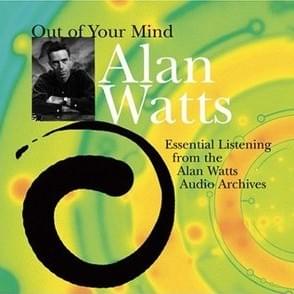
The Inevitable Ecstasy, Part 6: Of Pain and Suffering Alan Watts
На этой странице вы найдете полный текст песни "The Inevitable Ecstasy, Part 6: Of Pain and Suffering" от Alan Watts. Lyrxo предлагает вам самый полный и точный текст этой композиции без лишних отвлекающих факторов. Узнайте все куплеты и припев, чтобы лучше понять любимую песню и насладиться ею в полной мере. Идеально для фанатов и всех, кто ценит качественную музыку.

So now, then, this sensation of the happening is basic to all we want to explore. With that in mind, we can go on, now, to the question of pain and our so-called reactions to it. And once again, you will see that the problem, as posed, immediately sets up the duality of the pain and the one who suffers it; the one who offers resistance. And therefore, reasoning from that, you can quite easily see that a great deal of the energy of pain is derived from the resistance offered to it. And that resistance takes very many forms, not only of attempts to get away from a pain which is present.
Let’s suppose you try to run away from a migraine headache. As you carry it with you you can’t get away from it, and it seems to be absolutely in the middle of everything that you are. So that, however much you thresh and resist, the pain goes with the threshing. Other forms of pain are problematic, to a large extent, because of our prior anxiety about them, and because of the valuations that we put on them. And we may as well start from that point. And what we very largely dislike about people in pain is the noise they make.
When I challenged R. H. Blyth and said, You’re a vegetarian, but don’t you realize that plants have feelings? He said, Yes, I do, but they don’t scream so loudly. And so, say, in a hospital or any place like that, it is taboo to scream. Because you must understand that hospitals—and any institution of that kind—is run for the convenience of the staff. All institutions are. And so everything is done in such a way as to interiorize—localize—pain. Of course, in a way, that makes it worse.
So we have a big, big social problem. Fundamental, right from the beginning, about our reaction to anything painful. And these are very odd things. Let’s take, for example, when a child has eaten something that doesn’t agree with it and it vomits. Now, you well know that, when you’ve got a bad stomach, that vomiting is a very pleasant release from that. But because when mama sees the vomit—or somebody else does—they say, Ugh! You are taught that doing it is socially unacceptable, and therefore people suppress vomiting, and learn from their parents that it’s nasty—just as they learn that excrement is nasty, and just as they learn to worry about disease and death.
Let’s suppose you try to run away from a migraine headache. As you carry it with you you can’t get away from it, and it seems to be absolutely in the middle of everything that you are. So that, however much you thresh and resist, the pain goes with the threshing. Other forms of pain are problematic, to a large extent, because of our prior anxiety about them, and because of the valuations that we put on them. And we may as well start from that point. And what we very largely dislike about people in pain is the noise they make.
When I challenged R. H. Blyth and said, You’re a vegetarian, but don’t you realize that plants have feelings? He said, Yes, I do, but they don’t scream so loudly. And so, say, in a hospital or any place like that, it is taboo to scream. Because you must understand that hospitals—and any institution of that kind—is run for the convenience of the staff. All institutions are. And so everything is done in such a way as to interiorize—localize—pain. Of course, in a way, that makes it worse.
So we have a big, big social problem. Fundamental, right from the beginning, about our reaction to anything painful. And these are very odd things. Let’s take, for example, when a child has eaten something that doesn’t agree with it and it vomits. Now, you well know that, when you’ve got a bad stomach, that vomiting is a very pleasant release from that. But because when mama sees the vomit—or somebody else does—they say, Ugh! You are taught that doing it is socially unacceptable, and therefore people suppress vomiting, and learn from their parents that it’s nasty—just as they learn that excrement is nasty, and just as they learn to worry about disease and death.
Комментарии (0)
Минимальная длина комментария — 50 символов.












